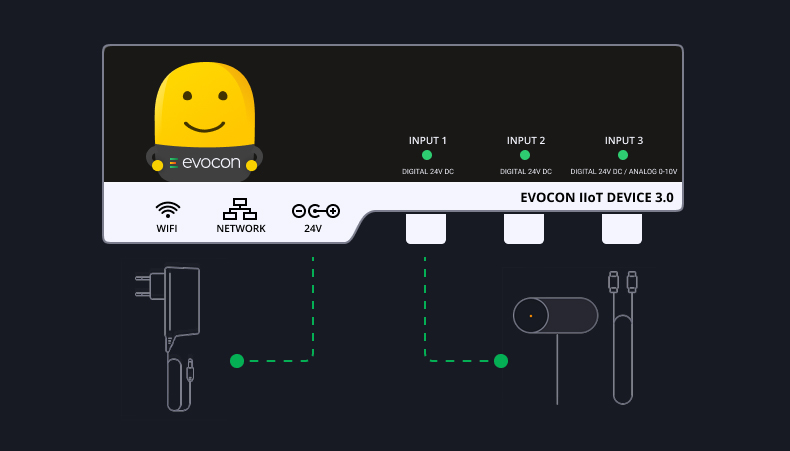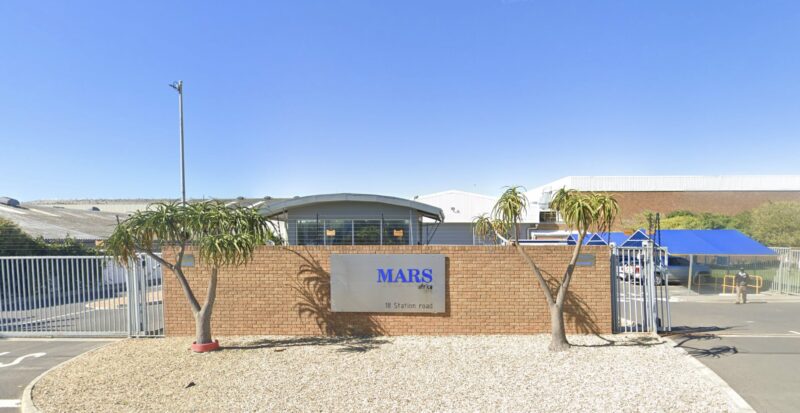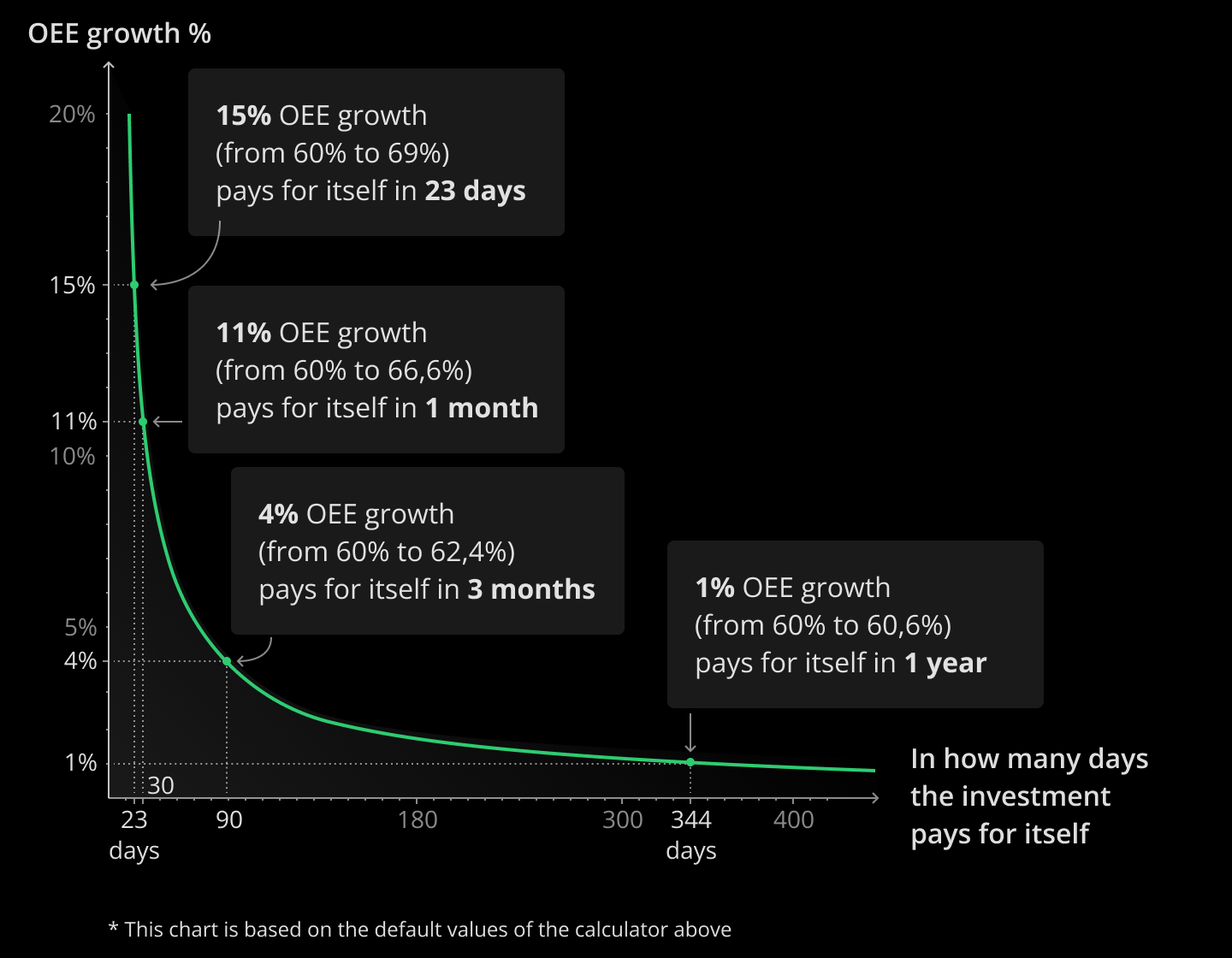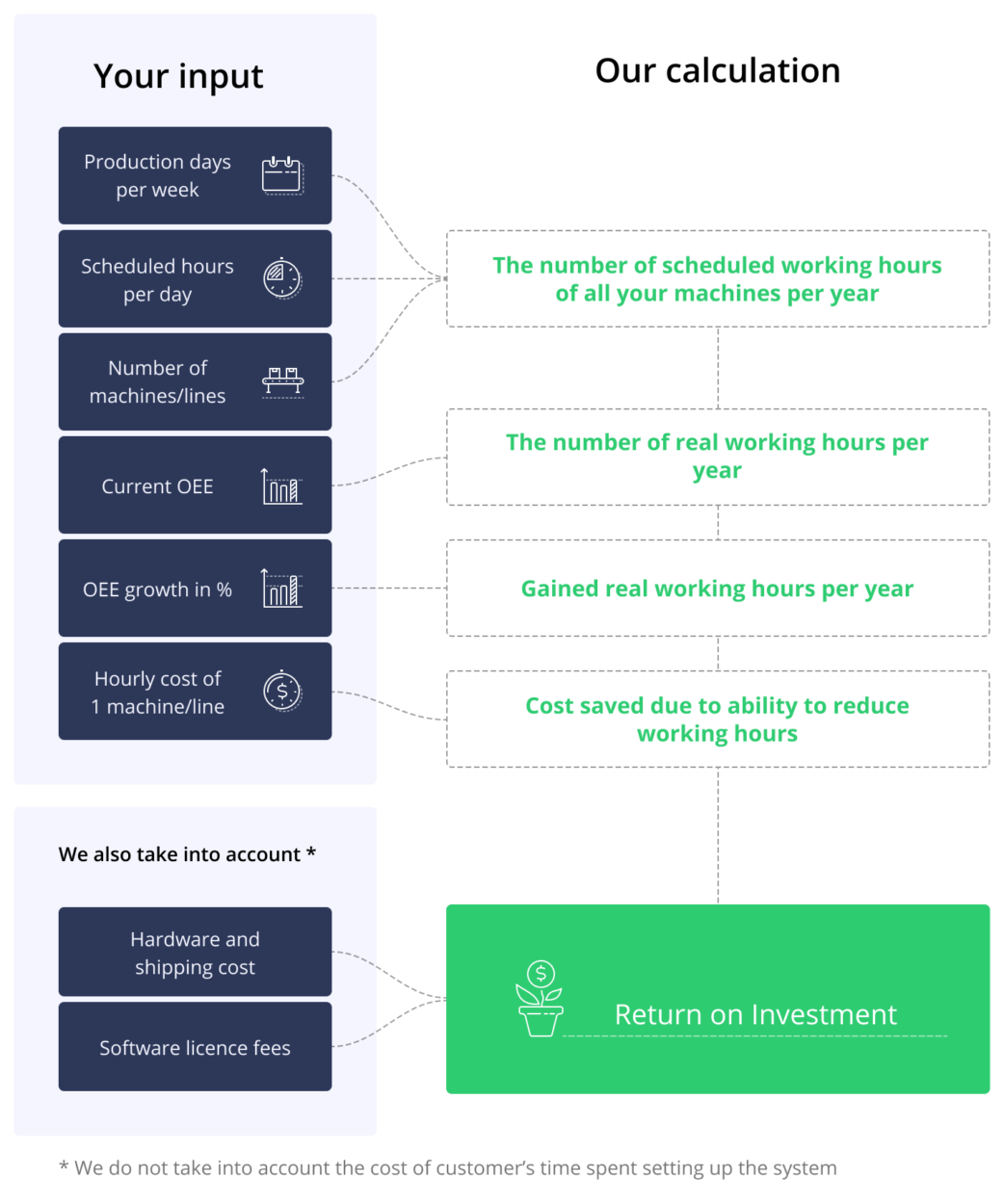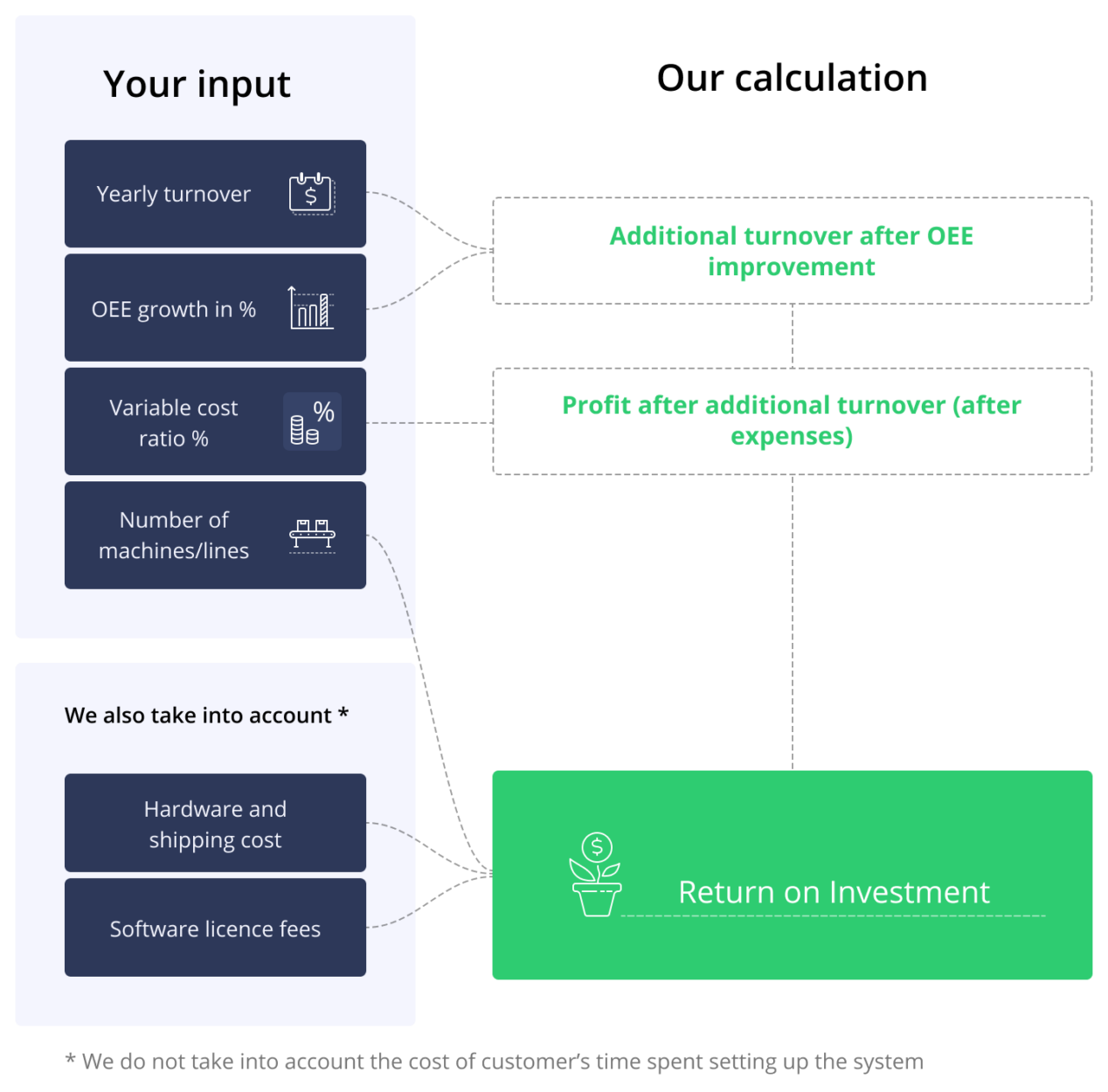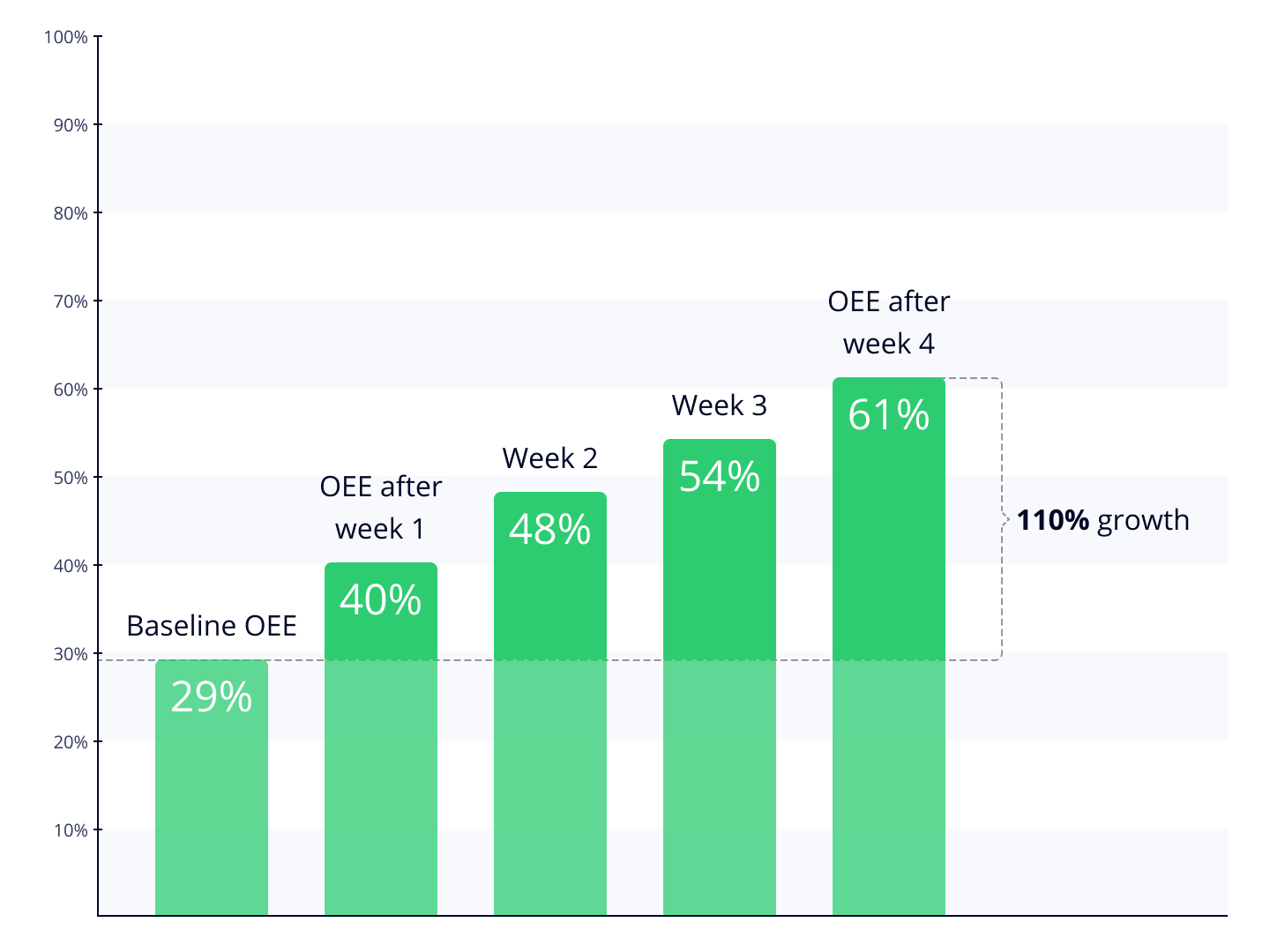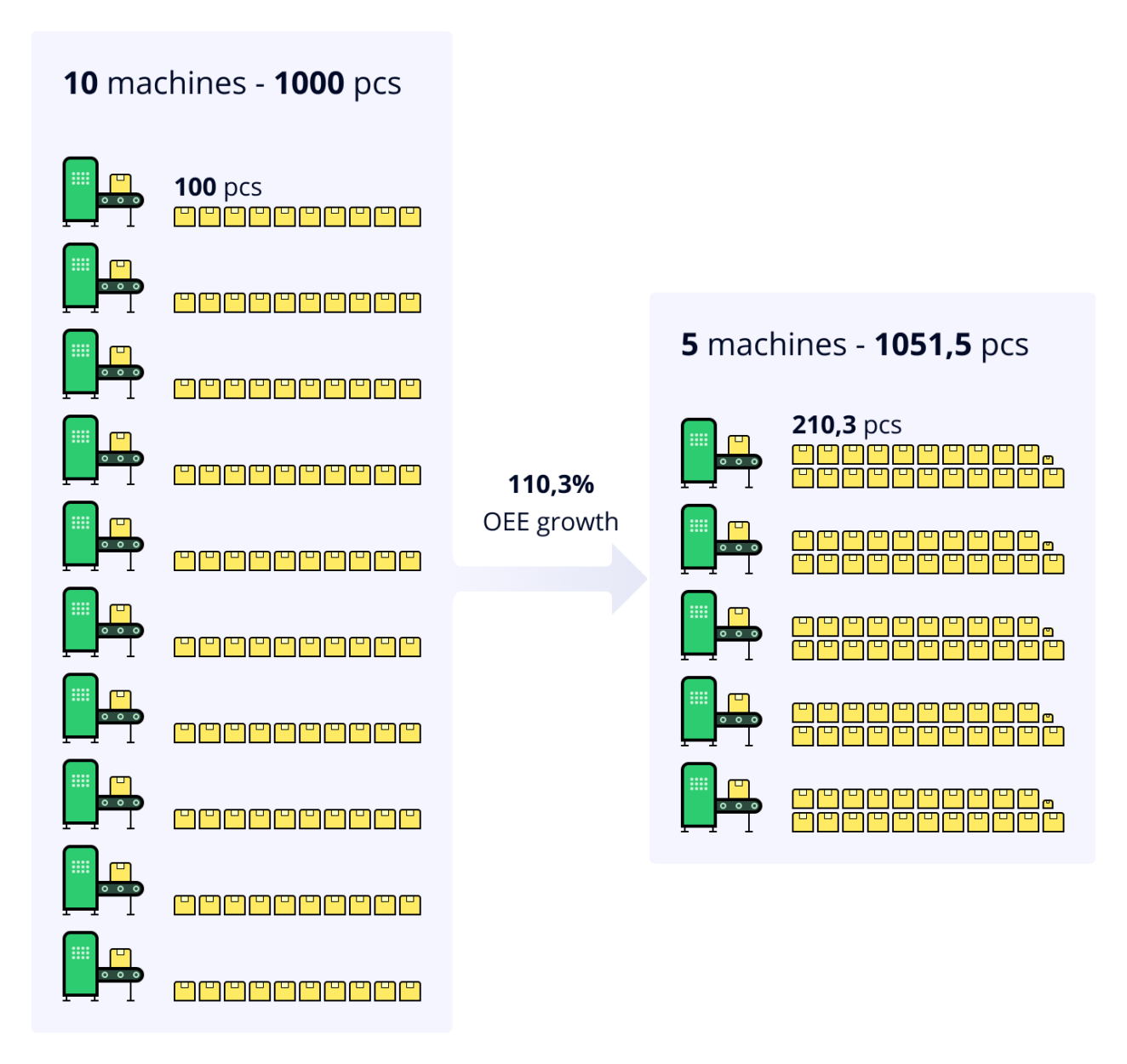-
Product
-
Use casesIndustries
Evocon supports manufacturers across 15+ industries worldwide. Here are some of the most popular:
-
Resources
-
Learn
Overview of all the features available in Evocon’s OEE software and how to use them.
-
Case Studies
In-depth stories of our users and how Evocon has helped their production.
-
Reports and Tools
Tools to help you gather valuable information in regard to investing or using Evocon.
-
OEE Fundamentals
Basic concepts on what is OEE and guides to implementing it.
-
Increasing Productivity
Tips and guides on how to increase productivity and efficiency.
-
Sustainability in Manufacturing
Reduce the impact of your operations with these helpful articles and guides.
-
Decoding World-Class OEE
We analyzed the average OEE scores on 3,500+ machines across 50+ countries.
-
Key Trends Impacting Shop Floors
Three industry leaders share exclusive insights on the shop floors trends in 2025.
-
Machine Utilization Analysis
Data-driven insights on how machines are utilized and the causes of downtime.
-
6-Month Plan to Reduce Downtime
A step-by-step guide to reduce downtime, based on 10 years of experience.
-
-
About us
-
Partner program
-
Pricing
-
Product
-
Back to main menu
- Product
-
Product Overview
Overview of all the features available in Evocon’s OEE software.
-
Enterprise Package
Advanced features that deliver security, seamless integration, and efficient data management.
-
Integrations
How Evocon integrations with your ERP and other manufacturing systems work.
-
Security
Overview of security related questions and answers about Evocon.
-
Hardware
Can Evocon monitor your production process?
What hardware do you need? -
FAQ
Can Evocon monitor your production process?
What hardware do you need?
-
-
Use cases
-
Back to main menu
- Use cases
-
OEE Monitoring
Optimize production with real-time and actionable OEE insights.
-
Downtime Tracking
Identify root causes, reduce interruptions, and significantly improve OEE.
-
Manufacturing Data Collection
Automate the capture of production data to drive efficiency and continuous improvement.
-
Production Monitoring
Track performance, analyze manufacturing lines, and optimize operations.
-
Continuous Improvement
Enhance processes, reduce waste, and drive efficiency.
-
Quality Control
Digitize and automate recurring quality checks for more efficient quality control.
IndustriesEvocon supports manufacturers across 15+ industries worldwide. Here are some of the most popular:
-
-
Resources
-
Back to main menu
- Resources
-
Learn
Overview of all the features available in Evocon’s OEE software and how to use them.
-
Back to main menu
-
Resources
- Learn
-
OEE Fundamentals
Basic concepts on what is OEE and guides to implementing it.
-
Increasing Productivity
Tips and guides on how to increase productivity and efficiency.
-
Sustainability in Manufacturing
Reduce the impact of your operations with these helpful articles and guides.
-
-
Case Studies
In-depth stories of our users and how Evocon has helped their production.
-
Back to main menu
-
Resources
- Case Studies
-
-
Reports and Tools
Tools to help you gather valuable information in regard to investing or using Evocon.
-
Back to main menu
-
Resources
- Reports and Tools
-
Decoding World-Class OEE
We analyzed the average OEE scores on 3,500+ machines across 50+ countries.
-
Key Trends Impacting Shop Floors
Three industry leaders share exclusive insights on the shop floors trends in 2025.
-
Machine Utilization Analysis
Data-driven insights on how machines are utilized and the causes of downtime.
-
6-Month Plan to Reduce Downtime
A step-by-step guide to reduce downtime, based on 10 years of experience.
-
-
-
About us
-
Back to main menu
- About us
-
Evocon
-
Contact
-
Join us
-
-
Partner program
-
Pricing
